Life on Mauna Kea
March 2004
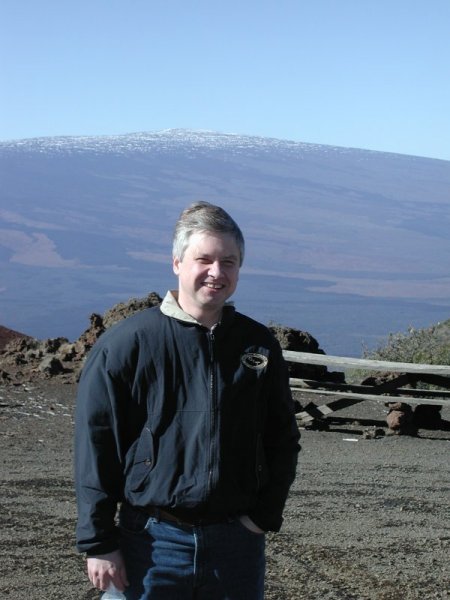
A little climb above the Hale Pohaku mid-level facility shows Mauna Loa
in the background across the saddle.
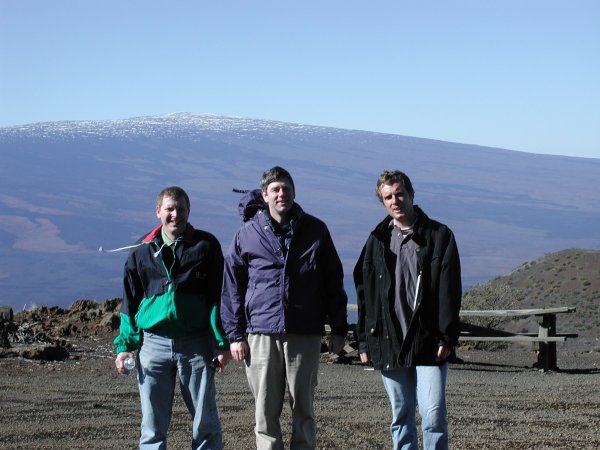
One of the reasons that the sky is so blue is that there's a brisk wind
blowing (right to left) as we go for a walk to wake up.
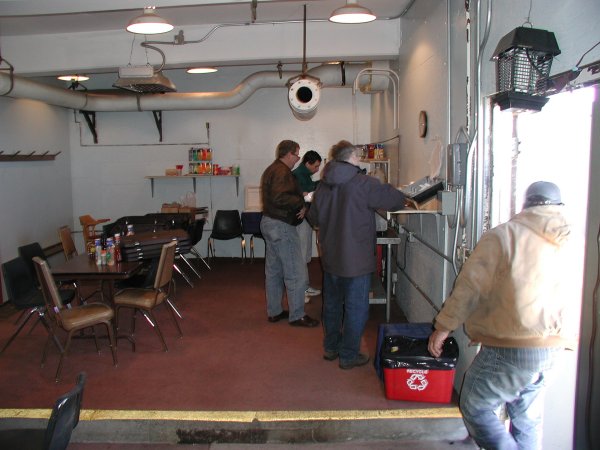
Lunch in the summit lunchroom on setup day. The temperature is
about freezing outside (and the wind was blowing at about 40 mph), but
it is somewhat warmer inside. Not so warm that we take off our
coats to eat, though. This is the old generator room for the UH
88" telescope, which gives the room some interesting decorative
plumbing. Old exhaust pipes make for a high-tech look.
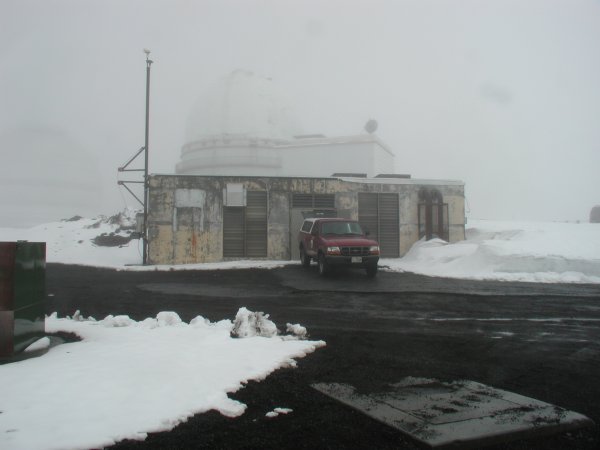
The lunchroom looks even more like an old generator room from the
outside. One of the cooks drives up every day in the red SUV with
lunch for the crews working on the telescopes.
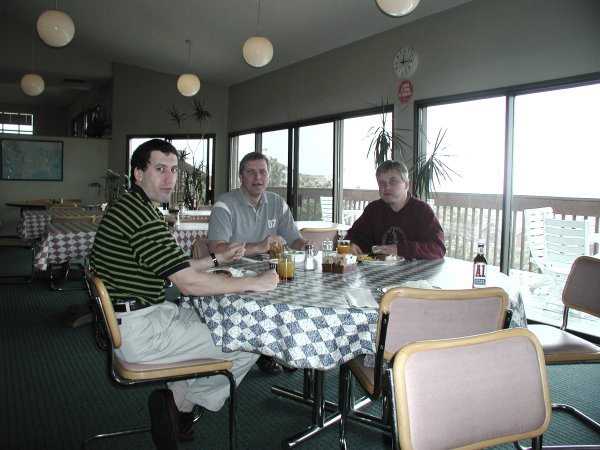
The dining room at Hale Pohaku is much more comfortable.
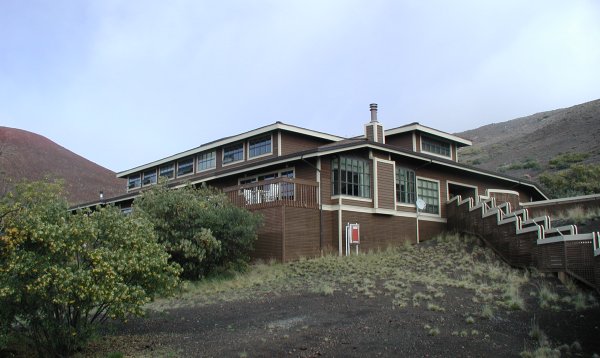
The dining room is in the main building at Hale Pohaku, which contains
offices, a library, pool tables, and a laundry room as well as the
dining area. The Hale Pohaku mid-level facility is at an elevation
of 9,500 feet, and is where we spend our time when we're not at the
telescope.
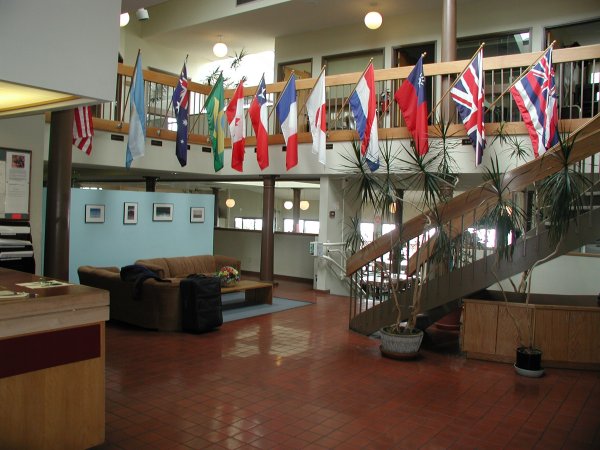
The entry hall to the main building, with flags from all of the
countries involved in the observatories (and, for good measure, the
State of Hawaii on the far right.). The offices are upstairs, the
dining room directly ahead.
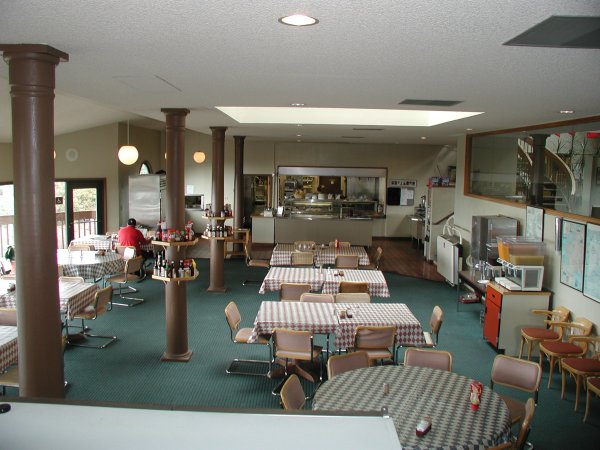
The dining room, with the kitchen at the far end. The big windows
to the left open on a porch with a nice view of Mauna Loa.
Stairs toward the far end on the right side lead up to the entry hall.

Here's the CSO office, up on the second floor, with Attila and Jonas
busy at work. Free internet!
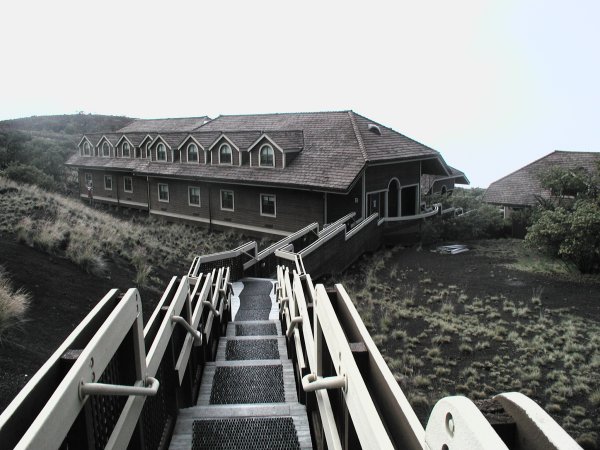
There are three dorm buildings down a set of stairs from the main
building. At Hale Pohaku's 9,500 feet elevation most of us puff up
the stairs for the first few times. But that's the point: it's
good to get used to the altitude.
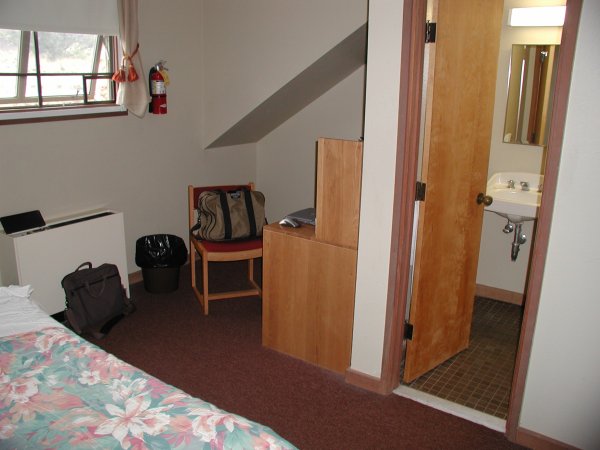
The dorm rooms are just like little motel rooms: bed, desk, bathroom,
and closet. The room-darkening blinds on the windows are a big
help, too.
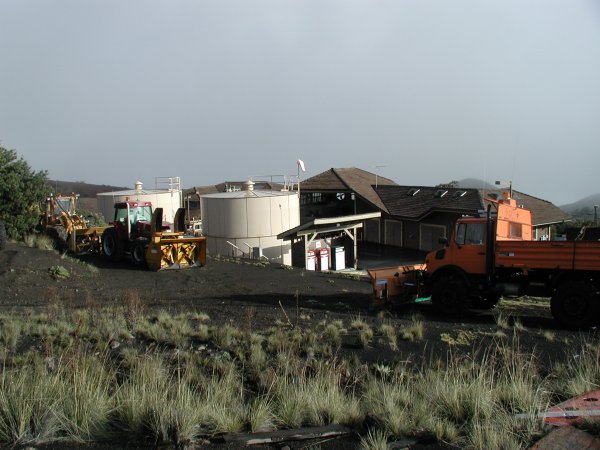
What tour of Hale Pohaku would be complete without seeing exciting
things such as the water tanks, gas station, and road maintenance
equipment? This may well be the Big Island's largest collection of
snowplows -- here are three of the five or so at the depot, plus two
big road graders that keep the dirt road tidy.
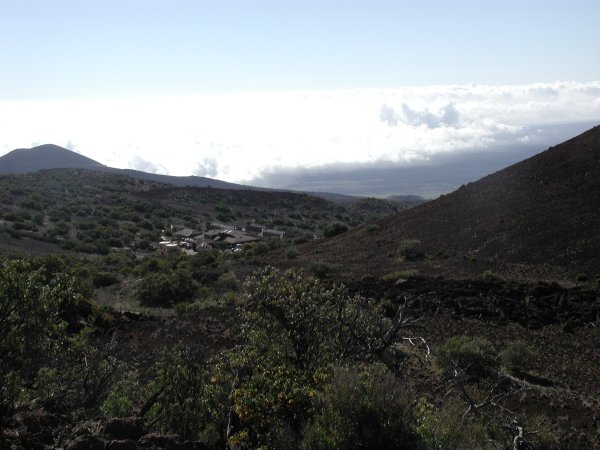
From a bit up the mountain you see the whole cluster of buildings at
Hale Pohaku. Clouds cover the saddle between Mauna Kea and Mauna Loa.
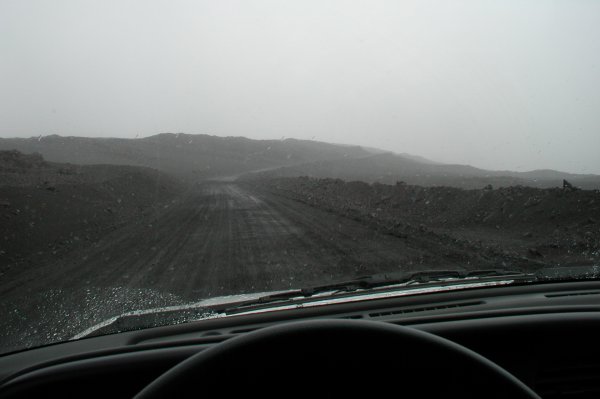
Up the road to the summit, a drive of nine miles or so. At least
it was less dusty on the road between Hale Pohaku and the summit.
The first half of the road is unpaved, dusty in dry weather, but much
preferred to the paved part near the summit in icy weather.
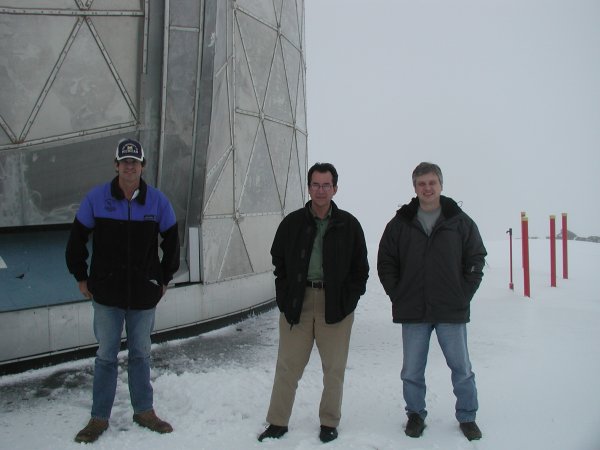
A few days into the run, the weather had changed from very windy and
very cold to snowy and cold.
Here we come for a summit visit with Richard, the telescope's technical
manager, and Richard, the telescope's NSF program officer.
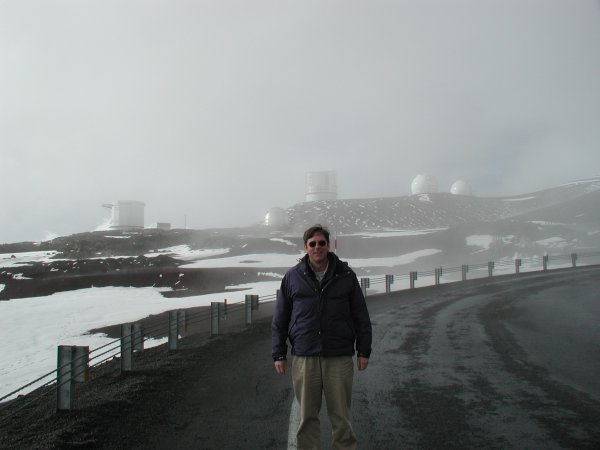
On the last day, on the way back from packing, we are treated to some
sun, fog, and light snow, all at once.
In the background, the Maxwell Telescope, the top of the roof of the
SMA's assembly building, the CSO, Subaru, and the twin Keck
telescopes.
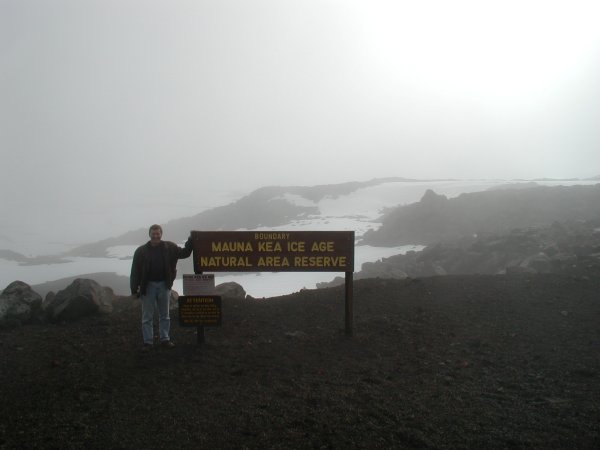
This sign actually refers to a previous ice age, a real ice age, and
has nothing to do with the miserable weather on this run. We hope.
Questions or comments? Please contact Andrew Harris.
















